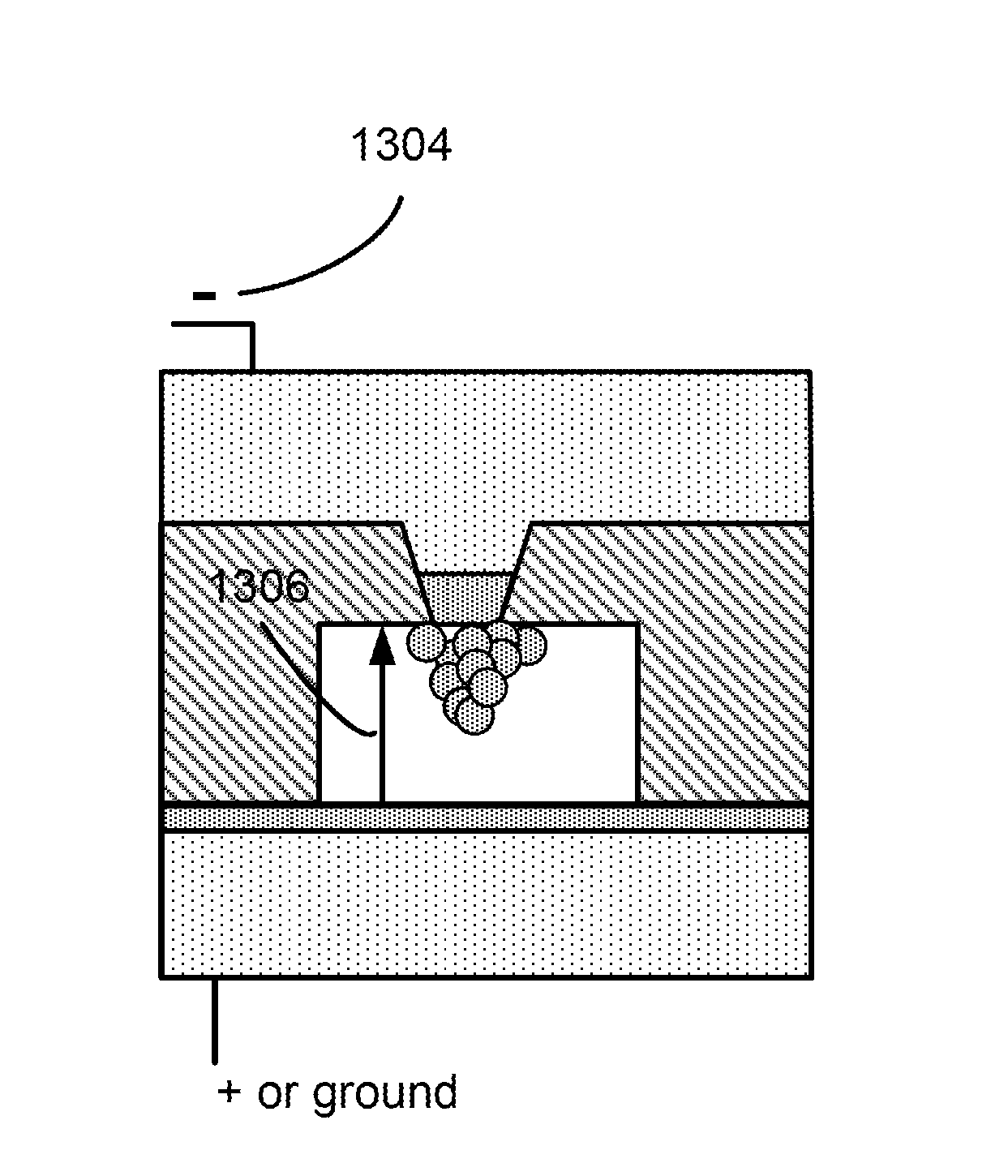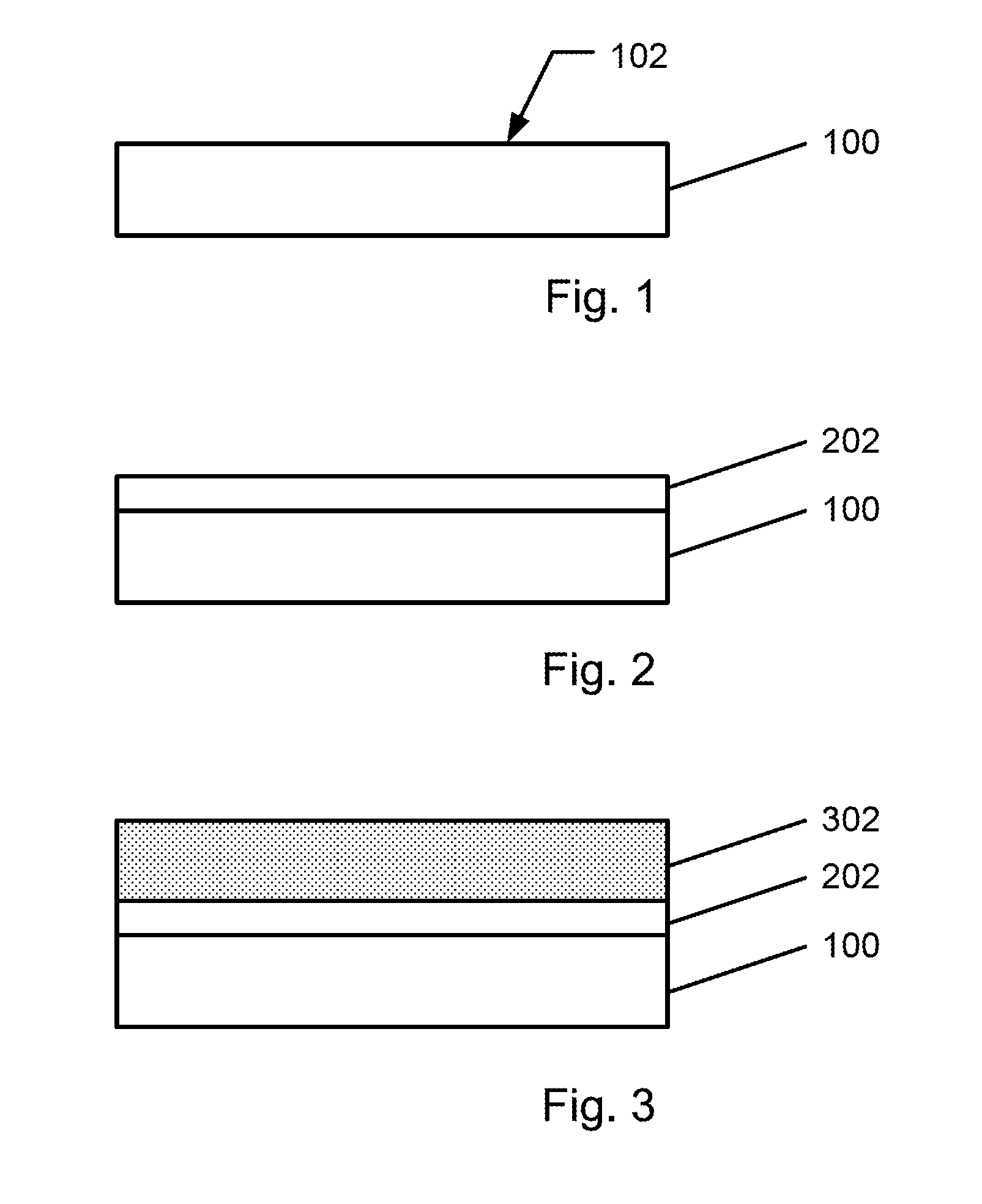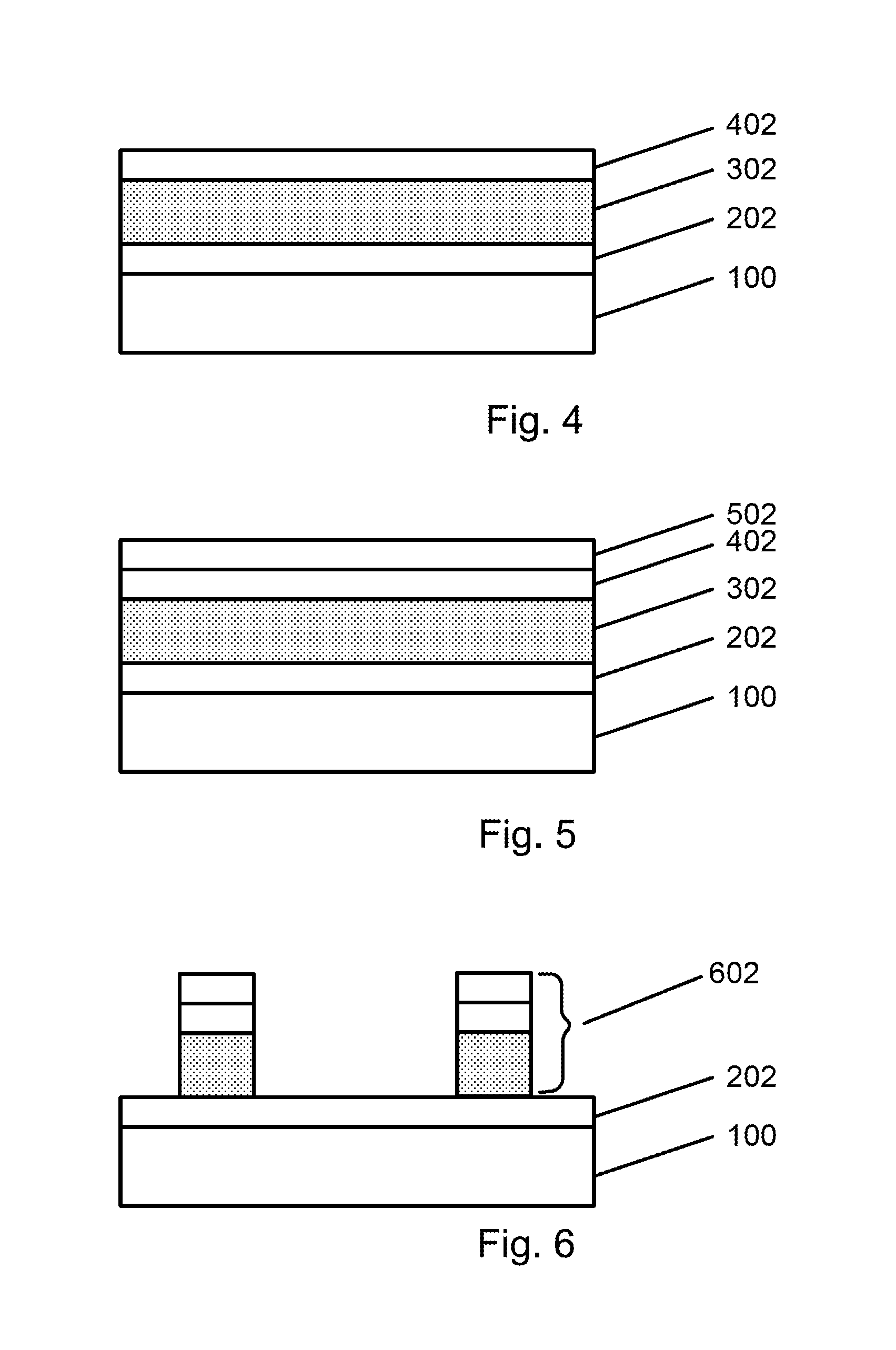Selective deposition of silver for non-volatile memory device fabrication
a technology of non-volatile memory devices and selective deposition, which is applied in the direction of bulk negative resistance effect devices, semiconductor devices, electrical equipment, etc., can solve the problems of non-scaling of sub-threshold slopes, increase in power dissipation, and device performance degradation, and achieve a broader range of applicability
- Summary
- Abstract
- Description
- Claims
- Application Information
AI Technical Summary
Benefits of technology
Problems solved by technology
Method used
Image
Examples
Embodiment Construction
[0011]The present invention is generally related to resistive switching devices. More particularly, embodiments according to the present invention provide a method and a structure for forming a resistive switching device. The present invention can be applied to non-volatile memory devices but it should be recognized that the present invention can have a much broader range of applicability
[0012]In resistive switching using amorphous intrinsic silicon as the switching material, a metal material is usually used as at last one of the electrodes. The metal material forms a metal region in the amorphous intrinsic silicon material in the “on” state. In the “off” state, there is an absence or reduction of metal in the amorphous silicon. The resistance of the amorphous intrinsic silicon material is caused to change depending on a voltage applied to the electrodes. Silver is a material of choice as it has a suitable diffusion characteristic in the amorphous intrinsic silicon material. However...
PUM
| Property | Measurement | Unit |
|---|---|---|
| sizes | aaaaa | aaaaa |
| programming voltage | aaaaa | aaaaa |
| intrinsic semiconductor | aaaaa | aaaaa |
Abstract
Description
Claims
Application Information
 Login to View More
Login to View More - R&D
- Intellectual Property
- Life Sciences
- Materials
- Tech Scout
- Unparalleled Data Quality
- Higher Quality Content
- 60% Fewer Hallucinations
Browse by: Latest US Patents, China's latest patents, Technical Efficacy Thesaurus, Application Domain, Technology Topic, Popular Technical Reports.
© 2025 PatSnap. All rights reserved.Legal|Privacy policy|Modern Slavery Act Transparency Statement|Sitemap|About US| Contact US: help@patsnap.com



